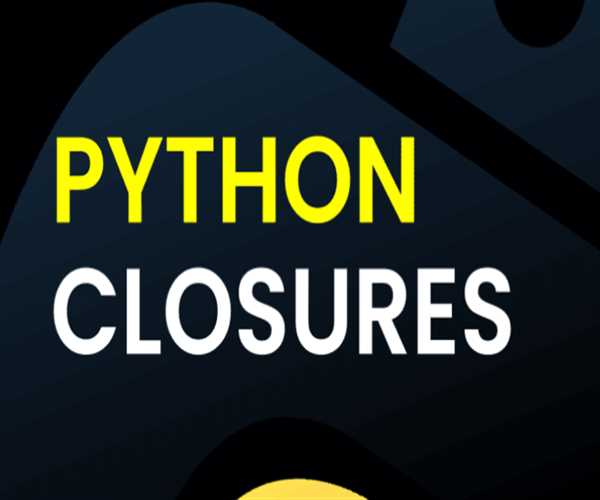In the realm of Python, where elegance and versatility intertwine, closures stand as a unique and powerful tool. Often shrouded in mystery, these enigmatic functions hold the key to unlocking advanced coding techniques and boosting your skills in data science, machine learning, and functional programming. So, strap on your coding hats, and let's delve into the fascinating world of Python closures!
Scope Safari: Where Variables Roam Free (and Not So Free)
Before we unleash the power of closures, understanding scope is crucial. Imagine scope as a set of invisible fences within your code, dictating where variables can be accessed. Global variables roam free in the entire program, while local variables stay confined within the function they were defined in. This creates a hierarchy, with inner functions nested within outer ones, each inheriting access to the variables of its enclosing scope.
Enter the Inner Circle: The Birth of Closures
Now, here's where things get exciting. When an inner function references a variable from its enclosing scope, and that outer function finishes its execution, something magical happens. The inner function, instead of vanishing into oblivion, retains a persistent memory of the outer scope and its variables. This phenomenon, my friends, is called a closure.
Think of it like this: the inner function captures the values of the enclosing scope variables and tucks them away in its own little pocket, even after the outer function is gone. This allows the inner function to operate on those captured values, creating a powerful and versatile tool for various coding scenarios.
Unleashing the Power: Real-World Applications of Closures
The applications of closures in Python are as diverse as the data we wrangle. Here are a few examples to ignite your imagination:
Data Science and Machine Learning: Closures can be used to create custom callback functions for iterating over large datasets or training machine learning models. Imagine dynamically adjusting learning rates or stopping criteria based on real-time feedback – closures make it possible!
Functional Programming: Embrace the functional paradigm with closures! Define helper functions within functions to avoid code duplication and promote modularity. Think of it as nesting building blocks, each with its own specialized purpose.
Decorators: These powerful code modifiers leverage closures to dynamically add functionality to existing functions without modifying their original code. Want to add logging or timing capabilities? Closures are your secret weapon!
Event Handling: Closures shine in asynchronous programming, where callbacks are frequently used. Imagine reacting to button clicks or network responses with functions that remember their specific context – closures make it a breeze!
Mastering the Craft: Tips for Effective Closure Usage
Like any powerful tool, closures require careful handling. Here are some tips to ensure you wield them with finesse:
Clarity is key: Always document your closures clearly, explaining what variables they capture and how they use them. Future you (and your collaborators) will thank you!
Memory mindful: Closures can lead to unintended memory leaks if not managed properly. Ensure proper reference counting and garbage collection to avoid resource hogging.
Simplicity reigns: While closures offer immense power, don't over complicate your code. Use them strategically for specific tasks where they truly shine.
Embracing the Closure: A Journey to Powerful Coding
Python closures, once demystified, become a valuable asset in your coding arsenal. By understanding scope, harnessing the magic of inner functions, and applying them judiciously, you can unlock new levels of power, flexibility, and elegance in your code. So, dive into the world of closures, experiment, and witness the transformation in your coding journey! Remember, the world of data science, machine learning, and functional programming awaits, and closures are your key to unlocking its endless possibilities.




Leave Comment